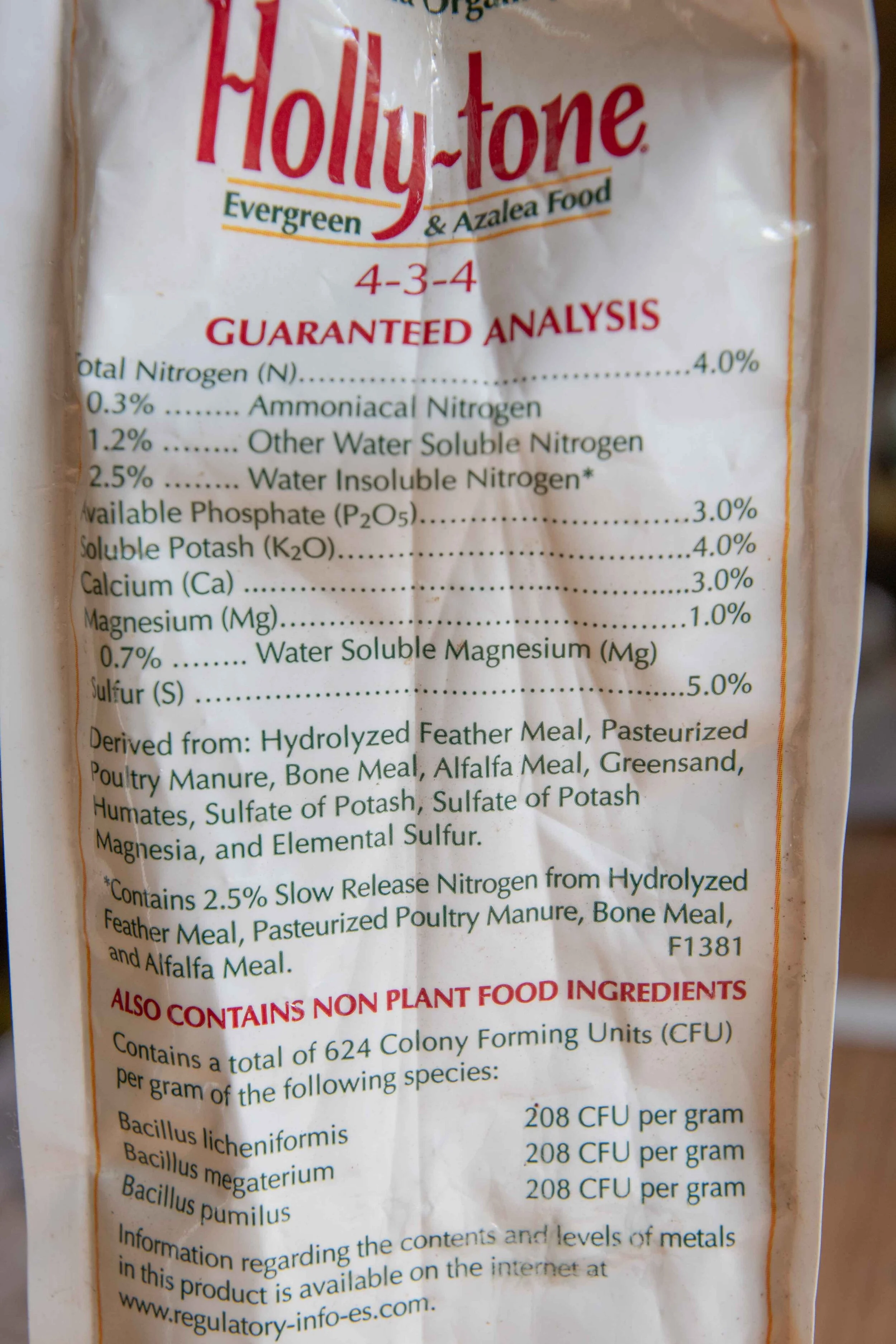by Mark Levisay
I’m going to take a break from talking about plants and shift focus to fertilizers and soil additives. The Corner Store Garden Center carries an extensive line of Espoma products that you don’t know about since you can’t come inside the greenhouse and see them all lined up! That’s a shame, because many of these products could prove useful to you during the garden season. I took my camera (and mask) up to the greenhouse one afternoon and photographed each product’s bag, front and back, so you could see what you’re missing. I’ll try to explain what’s in each product and what it can do for your garden.
Fertilizer for acid-loving plants
Holly Tone is an organic, balanced fertilizer with an N-P-K analysis of 4-3-4. It also contains 3% calcium (Ca), 1% magnesium (Mg) and 5% sulfur (S). The sulfur component is the key here, as this product will act to raise the acidity of the soil where it’s used.
Espoma’s organic Holly-Tone fertilizer for acid-loving plants.
Espoma’s “Bio-Tone” provides beneficial bacteria
You’ll also notice as you look at the side panel of the bag that it contains 3 types of bacteria. Healthy soil contains a mix of both bacteria and fungus, and these organisms are critical in breaking down chemical compounds into forms the plant can absorb. Adding these beneficial bacteria to your soil will improve the overall “biome” and help plants thrive. All of Espoma’s xxx-Tone fertilizers will have this “Bio-Tone” component. A side effect of this is that each package will have a “use by” date, as these bacteria colonies will slowly decline over time.
Another thing you’ll notice on the package is the source of the water-insoluble nitrogen (N). This in-soluble nitrogen needs to be broken down by organisms in the soil to be available to the plant, so it’s considered slow release. Feather meal, bone meal and poultry manure are all by-products of chicken and egg production, and alfalfa meal is derived from a common farm crop. It’s great that these by-products can be used as fertilizer and they also help improve the tilth of heavy soils. An unfortunate side-effect is that our dogs think this stuff is candy and we can only use it in areas where the dogs are fenced out!
Ingredients panel for Espoma’s Holly-Tone organic fertilizer.
Plants and application
There are a number of plants that benefit from growing in acidic soil conditions. Evergreen trees and shrubs, azaleas, rhododendrons and mountain laurels, and blueberries and other bramble berries come to mind. For a more complete list go to espoma.com for additional information. They have good lists of plants that benefit and application instructions.
Espoma recommends a spring application and a smaller fall application for shrubs and two separate spring applications for berries. To be sure for individual plant varieties I’d refer to Virginia Cooperative Extension’s website (ext.vt.edu) as they have loads of information on the nutritional requirements for most garden plants.
Next time we’ll talk about Plant Tone, which is an organic fertilizer I have used a lot in my vegetable garden with great results.
Have a garden question? Send me an email at marklevisay@gmail.com.

